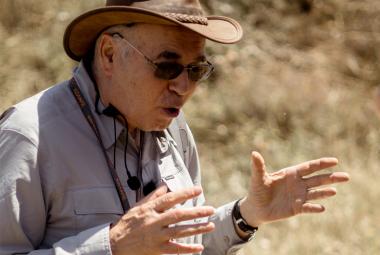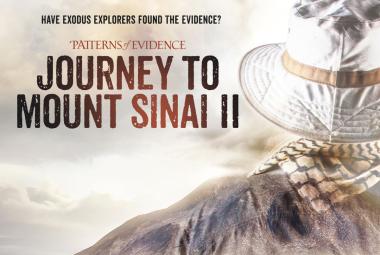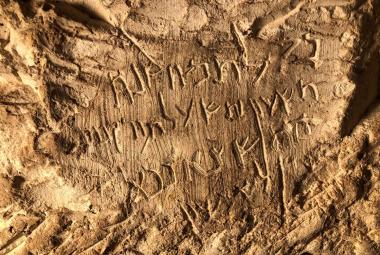Dame Isabel Piczek—a Hungarian trained particle physicist and internationally renowned monumental artist—has apparently uncovered hard, scientific evidence that Jesus Christ did, in fact, rise from the dead.
The object of her study is a simple piece of ancient fabric known as the Shroud of Turin.
The Most Studied Artifact in History
The Shroud of Turin is arguably the single most studied artifact in human history. It is a piece of ancient linen measuring 14 feet 3 inches long by 3 feet 7 inches wide. The bloodstained surface of the Shroud is marked with a negative image of the undistorted front and back sides of a naked man who appears to have been severely beaten and crucified—an ancient Roman form of torture and execution.
For centuries, based on the Gospel accounts, many Christians have believed that Christ’s body was wrapped in the Shroud when He was placed in a borrowed tomb in Jerusalem 2000 years ago.
In 2004, Dame Piczek became fascinated by the total absence of distortion of the Shroud image, a physical impossibility if the body had been lying on solid rock. Piczek’s work strongly suggests that the image of Jesus was projected as a quantum hologram onto the cloth as His body underwent the process of Resurrection.

“The entire Resurrection process is akin to the Big Bang creation of the universe when something was created from nothing,” explains Piczek. “You can read the science of the Shroud, such as total lack of gravity, lack of entropy (without gravitational collapse), no time, no space—it conforms to no known law of physics.”
Dame Piczek created a one-fourth size sculpture of the man in the Shroud. When viewed from the side, it appears as if the man is suspended in mid air (see graphic, below), indicating that the image defies previously accepted science. The phenomenon of the image brings us to a true event horizon, a moment when all of the laws of physics change drastically.
Dame Piczek contends that the image was created in an infinitesimally small fraction of a second and its formation was absent of the effects of gravity.
The Physics Behind the Holographic Image
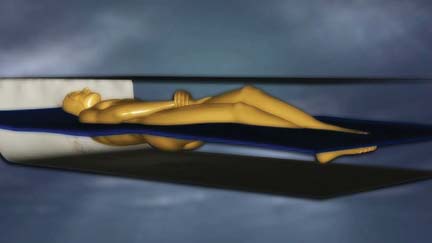 Dame Piczek explains the complicated physics behind the image on the Shroud: “As quantum time collapses to absolute zero (time stopped moving) in the tomb of Christ, the two event horizons (one stopping events from above and the other stopping the events from below at the moment of the zero time collapse) going through the body get infinitely close to each other and eliminate each other (causing the image to print itself on the two sides of the Shroud).
Dame Piczek explains the complicated physics behind the image on the Shroud: “As quantum time collapses to absolute zero (time stopped moving) in the tomb of Christ, the two event horizons (one stopping events from above and the other stopping the events from below at the moment of the zero time collapse) going through the body get infinitely close to each other and eliminate each other (causing the image to print itself on the two sides of the Shroud).
In general relativity, an event horizon is a boundary in space-time, most often an area surrounding a black hole, beyond which events cannot affect an outside observer. Light emitted from beyond the horizon can never reach the observer, and anything that passes through the horizon from the observer’s side appears to freeze in place.
Attempting to make an object approaching the horizon remain stationary with respect to an observer requires applying a force whose magnitude becomes unbounded (becoming infinite) the closer it gets.
The description of black holes given by general relativity is known to be only an approximation, and it is expected that quantum gravity effects become significant near the vicinity of the event horizon.1 It is this apparent suspension of gravity that underlies Dame Piczek’s analysis.
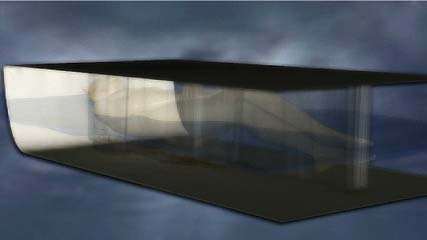 “According to the nature of event horizons the dead body must have left its image on the two surfaces of the event horizons. At the time of the explosion (when time stopped) of the event horizons these images were ejected onto both sides of the Shroud, with the body hovering parallel to the event horizons. This explains why the image shows a dead man, not the risen body, and also explains why the image is negative (went from a positive body image to the negative image like a camera film negative). This indicates how the image got onto the cloth.”
“According to the nature of event horizons the dead body must have left its image on the two surfaces of the event horizons. At the time of the explosion (when time stopped) of the event horizons these images were ejected onto both sides of the Shroud, with the body hovering parallel to the event horizons. This explains why the image shows a dead man, not the risen body, and also explains why the image is negative (went from a positive body image to the negative image like a camera film negative). This indicates how the image got onto the cloth.”
If confirmed, this discovery is expected to yield a totally new perspective on the very “singularity” attributed to the Creation of the universe in the first place. Piczek’s discovery—and those of other scientists and researchers who have studied the Shroud—is presented in The Fabric of Time, a television documentary and DVD from Grizzly Adams® Productions.
Three-Dimensional Hologram
 Also featured in the film, The Fabric of Time, is a three-dimensional, anatomically accurate hologram of a crucified man. Working independently of Piczek, a team of Dutch scientists led by Dr. Petrus Soons used laser technology to convert two-dimensional photographic negatives of the image on the Shroud.
Also featured in the film, The Fabric of Time, is a three-dimensional, anatomically accurate hologram of a crucified man. Working independently of Piczek, a team of Dutch scientists led by Dr. Petrus Soons used laser technology to convert two-dimensional photographic negatives of the image on the Shroud.
Among the several discoveries from the holographic image was the identification of the two coins placed over the eyes. These appear to be “widow’s mites,” minted in 29 A.D. in the reign of Tiberius (and which, due to their diminutive value, were not circulated outside of Israel.)
The DVD copies of The Fabric of Time include 3-D glasses to better view and appreciate the holographic images.
This documentary film is based in part on the following books: The Shroud of Turin by Ian Wilson (Doubleday); The Blood and the Shroud by Ian Wilson (Orion Publishing Group); and, the Shroud of Turin: An Adventure of Discovery by Mary and Alan Whanger, M.D. (Providence House).
Notes:
- A more complete description of event horizons would require a background of quantum gravity, such as M-theory, a new limit of supersymmetric string theory in which 11 dimensions of space-time may be identified.

